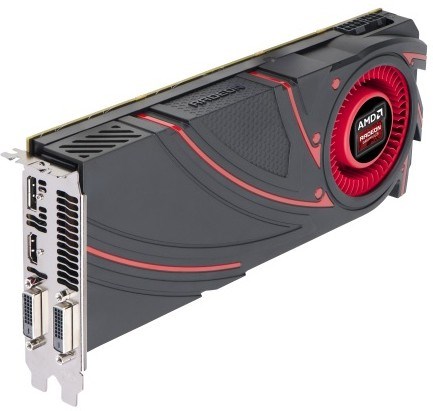One of the things we learned is that Battlefield 4 will be an AMD Gaming Evolved game and that this game will support Mantle, a new low-lower high-performance cross-platform graphics API for AMD's GCN-based GPUs. Mantle is basically a proprietary API that promises lower overhead, fewer bottlenecks, and more optimizations to enhance performance. Battlefield 4's Frostbite 3 game engine will run natively on Mantle instead of DirectX 11 on supported AMD hardware. One of the aspects Mantle also focuses on is to make it easier to cross developed games for the PC and consoles.
AMD today unveiled the AMD Radeon™ R9 290X, R9 290, R9 280X, R9 270X, R7 260X and R7 250 graphics cards, AMD's first GPUs in a new era of gaming defined by UltraHD displays, renewed vigor in game engine development, and a new generation of gamers that expect a more immersive entertainment experience. AMD also introduced the world to Mantle and AMD TrueAudio technology, the latest innovations that redefine the GPU by enabling both gamers and game developers with unprecedented audio and performance enhancements for compatible games1,2.
"The AMD Radeon R9 and R7 Series graphics cards are new GPUs for a new era in gaming," said Matt Skynner, corporate vice president and general manager, Graphics Business Unit, AMD. "This era is shaped by ultra-resolution gaming and an exciting new generation of highly-anticipated games like 'Battlefield™ 4.' But it's also an era shaped in a very powerful way by our own Unified Gaming Strategy; we've teamed up with the world's top game developers to establish a comprehensive portfolio of games that you can maximize to their full potential only with AMD Radeon™ graphics."
Mantle and Graphics Core Next: Simplifying Cross-Platform Game Development
The award-winning Graphics Core Next (GCN) architecture in the AMD Radeon R9 and R7 Series graphics cards continues to serve as a driving force behind the Unified Gaming Strategy, AMD's approach to providing a consistent gaming experience on the PC, in the living room or over the cloud - all powered by AMD Radeon graphics found in AMD graphics cards and accelerated processing units (APUs). The four pillars of the Unified Gaming Strategy - console, cloud, content and client - come together with the introduction of Mantle.
With Mantle, games like DICE's "Battlefield 4" will be empowered with the ability to speak the native language of the Graphics Core Next architecture, presenting a deeper level of hardware optimization no other graphics card manufacturer can match. Mantle also assists game developers in bringing games to life on multiple platforms by leveraging the commonalities between GCN-powered PCs and consoles for a simple game development process.
With the introduction of Mantle, AMD solidifies its position as the leading provider of fast and efficient game development platforms. Mantle will be detailed further at the AMD Developer Summit, APU13, taking place Nov. 11-13 in San Jose, Calif.
AMD TrueAudio Technology: World's First Programmable Audio Pipeline
AMD TrueAudio technology marks a new frontier in realism for PC gamers. AMD TrueAudio technology empowers game developers with a programmable audio pipeline on the GPU, inviting them to put their unique artistic fingerprint on in-game audio in the same way that the programmable graphics pipeline brought unfettered artistic vision to PC graphics. Enabled games can feature more realistic environmental dynamics, a richer tapestry of sound effects, breathtaking directional audio and more.
AMD TrueAudio technology enhances audio realism by simulating the human brain's perception of real-world sound, working in concert with the user's existing audio hardware to recreate a lifelike experience in upcoming games like "THIEF™" by Square Enix or "Lichdom" by Xaviant Games.
AMD Multi-Display Technology: Redesigned for Ultra-resolution Gaming
The arrival of the next-generation AMD Radeon graphics cards also marks a new chapter in AMD's historic support for stunning display configurations. AMD Radeon R9 and R7 Series graphics cards are made for gaming on UltraHD (3840x2160) displays, including support for non-tiled 2160p60 displays with a future AMD Catalyst™ driver release. In addition, gamers more accustomed to AMD Eyefinity multi-display technology will be freed to use virtually any combination of display outputs when connecting matching monitors to the DVI or HDMI® outputs on their system.
AMD Radeon R9 and R7 Series graphics cards will be available for purchase in the near future.
